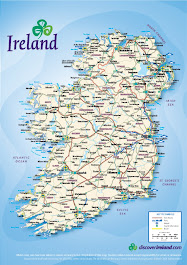 The beautiful church of St Bartholomew's, Clyde Road (Dublin), was consecrated in 1867. Many of its original features are intact, such as the sanctuary mosaics and the elaborate wrought iron choir screen. The architect was Thomas Wyat. On June 29 at 7.30 pm, St. Bartholomew's church is going to be the finale highlight concert venue for the Washington Women's Chorus.
The beautiful church of St Bartholomew's, Clyde Road (Dublin), was consecrated in 1867. Many of its original features are intact, such as the sanctuary mosaics and the elaborate wrought iron choir screen. The architect was Thomas Wyat. On June 29 at 7.30 pm, St. Bartholomew's church is going to be the finale highlight concert venue for the Washington Women's Chorus.The church is celebrated for its fine music. The choir of boys and men, the only remaining all-male parish church choir in the country, generally sings at least one of the choral services each Sunday during term-time. The remainder are sung by the girls’ choir (formed five years ago and now playing an increasingly prominent role in the church’s regular worship as well as undertaking a program of regular concerts and joint events around the city and country), the Elgin Chorale (which sings during choir vacations) and the newly formed chamber choir the Clyde Chorale. The choirs’ repertoire is fully representative of the major styles of choral music from the sixteenth century up to the present day. With its superb acoustic, splendid organ and convenient location, Saint Bartholomew’s is becoming more widely known as an excellent concert venue.
The organ was built in 1887 by Gray & Davison. Rebuilt in 1925, it was then left largely unaltered until 1963 when another firm, J. W. Walker & Sons Ltd, undertook a major restoration. The organ was last rebuilt by Trevor Crowe of Dublin in 2002. The first radio broadcast of an organ recital at the church was made in 1935.














